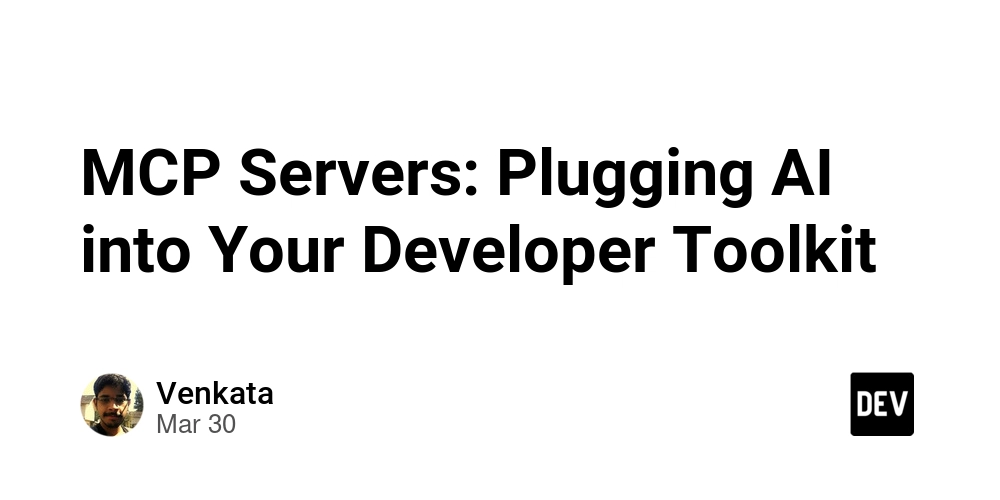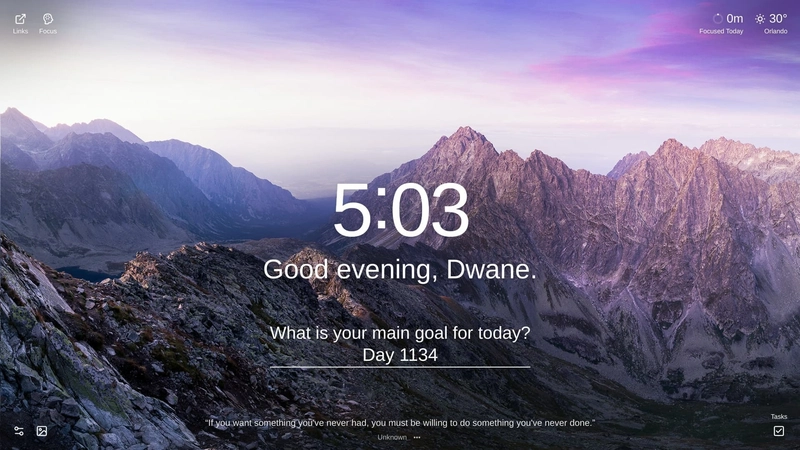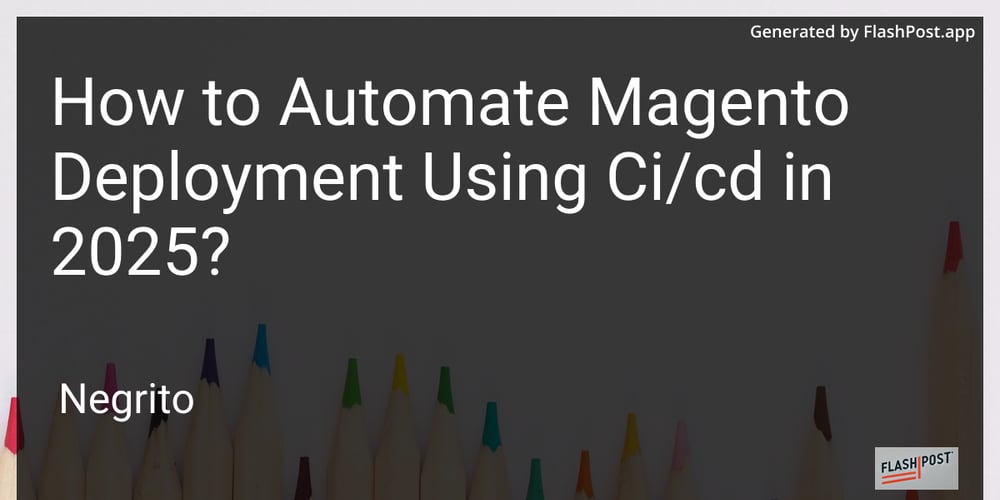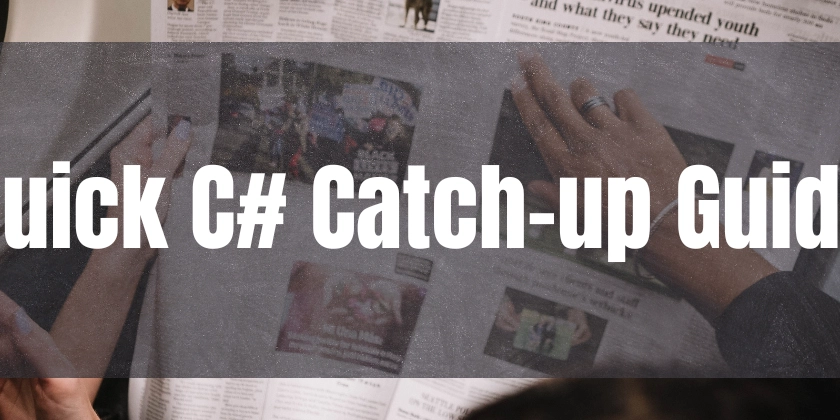MCP Servers: Plugging AI into Your Developer Toolkit
Part 1: The USB-C Moment for AI Development - Accelerating Developer Workflows Introduction The Model Context Protocol (MCP) solves a critical challenge in today's AI landscape: how to enable AI models to effectively communicate with diverse software tools. As AI capabilities expand, MCP provides a standardized interface that eliminates custom integration work, allowing models to seamlessly interact with applications through a common language. What is an MCP Server? An MCP server functions as a bridge between AI models and software applications. It exposes tools and services to AI models through a standardized request-response protocol that operates over standard I/O or command interfaces. Language-agnostic by design, MCP servers maintain security boundaries while enabling type-safe interactions with external services. As quoted from the Model Context Protocol documentation: MCP is an open protocol that standardizes how applications provide context to LLMs. Think of MCP like a USB-C port for AI applications. Just as USB-C provides a standardized way to connect your devices to various peripherals and accessories, MCP provides a standardized way to connect AI models to different data sources and tools. Why MCP? MCP creates a universal communication standard between AI models and software applications, eliminating complex integration requirements. Key advantages include: Standardized messaging format across all connected applications Automatic translation of natural language to specific application commands Unified access management for both local and cloud-based services Seamless multi-tool workflows without custom coding Integration over standard I/O The Power of Standardization Universal Communication MCP uses a consistent JSON-based message format, providing several key benefits: Consistency Uniform error handling Standardized response formats Predictable behavior Flexibility Language-agnostic implementation Easy tool addition/removal Scalable architecture Security Built-in permission models Request validation Audit trails Key MCP Integrations Development Tools GitHub / GitLab: Repository management and API integration. Artifactory: Binary management and API integration. Jira: Issue retrieval and analysis. Productivity & Communication Slack: Channel management and messaging. Google Maps: Location services and directions. Data & File Systems PostgreSQL / SQLite: Database querying with schema inspection. Google Drive: File access and search. Community Highlights Docker: Container management. Kubernetes: Orchestrate pods and services. Snowflake: Database interaction. This article is part of a series on MCP. Stay tuned for our next piece on going over architecture of MCP where we'll explore the intricate details of how MCP components work together

Part 1: The USB-C Moment for AI Development - Accelerating Developer Workflows
Introduction
The Model Context Protocol (MCP) solves a critical challenge in today's AI landscape: how to enable AI models to effectively communicate with diverse software tools. As AI capabilities expand, MCP provides a standardized interface that eliminates custom integration work, allowing models to seamlessly interact with applications through a common language.
What is an MCP Server?
An MCP server functions as a bridge between AI models and software applications. It exposes tools and services to AI models through a standardized request-response protocol that operates over standard I/O or command interfaces. Language-agnostic by design, MCP servers maintain security boundaries while enabling type-safe interactions with external services.
As quoted from the Model Context Protocol documentation:
MCP is an open protocol that standardizes how applications provide context to LLMs. Think of MCP like a USB-C port for AI applications. Just as USB-C provides a standardized way to connect your devices to various peripherals and accessories, MCP provides a standardized way to connect AI models to different data sources and tools.
Why MCP?
MCP creates a universal communication standard between AI models and software applications, eliminating complex integration requirements. Key advantages include:
- Standardized messaging format across all connected applications
- Automatic translation of natural language to specific application commands
- Unified access management for both local and cloud-based services
- Seamless multi-tool workflows without custom coding
- Integration over standard I/O
The Power of Standardization
Universal Communication
MCP uses a consistent JSON-based message format, providing several key benefits:
Consistency
- Uniform error handling
- Standardized response formats
- Predictable behavior
Flexibility
- Language-agnostic implementation
- Easy tool addition/removal
- Scalable architecture
Security
- Built-in permission models
- Request validation
- Audit trails
Key MCP Integrations
Development Tools
- GitHub / GitLab: Repository management and API integration.
- Artifactory: Binary management and API integration.
- Jira: Issue retrieval and analysis.
Productivity & Communication
- Slack: Channel management and messaging.
- Google Maps: Location services and directions.
Data & File Systems
- PostgreSQL / SQLite: Database querying with schema inspection.
- Google Drive: File access and search.
Community Highlights
- Docker: Container management.
- Kubernetes: Orchestrate pods and services.
- Snowflake: Database interaction.
This article is part of a series on MCP. Stay tuned for our next piece on going over architecture of MCP where we'll explore the intricate details of how MCP components work together










![From drop-out to software architect with Jason Lengstorf [Podcast #167]](https://cdn.hashnode.com/res/hashnode/image/upload/v1743796461357/f3d19cd7-e6f5-4d7c-8bfc-eb974bc8da68.png?#)






























































